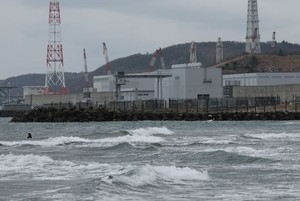By AYAMI KO/ Staff Writer
April 17, 2024 at 14:43 JST
 Members discuss the public pension system at a meeting of the pension subcommittee of the Social Security Council on April 16. (Ayami Ko)
Members discuss the public pension system at a meeting of the pension subcommittee of the Social Security Council on April 16. (Ayami Ko)
The welfare ministry began preparing for a crucial reform of the pension system scheduled for next year as it comes under pressure from the nation's graying population and falling birthrate.
A ministry council on April 16 discussed scenarios that members will study in a financial verification of the public pension system, which is conducted every five years.
In the verification, dubbed a "health checkup" of the pension system, the ministry produces estimates for future benefit and premium levels based on demographic and economic projections.
The previous review conducted in 2019 forecast that future benefit levels of the national pension would decline by as much as 30 percent as the population ages and shrinks.
Council members will examine options to increase benefit levels and announce the results of estimates this summer, which will be used for the pension system reform next year.
The ministry on April 16 presented a proposal to extend the period when people contribute to the national pension by five years to a total of 45 years until they are 65 years old.
The public pension system consists of two layers: the national pension, also known as the basic pension, and the employees’ pension.
The national pension covers all people in Japan between the ages 20 and 59, while company employees and public servants additionally join the employees’ pension.
The 2019 review included an estimate for benefit levels based on a 45-year pay-in period for the national pension.
It showed that the benefit level, or the income replacement rate, would improve by 6.8 points for a model household of a company employee and a spouse.
The income replacement rate of 60 percent, for example, means that pensioners are entitled to benefits equivalent to 60 percent of the average after-tax income of the working-age population.
Currently, benefit payments of the employees’ pension are suspended if the wages of working people 65 or older exceed a certain level.
The ministry proposed producing an estimate for cases where this system is reviewed or scrapped because it has been criticized as discouraging elderly people from continuing to work.
Other proposals included covering part-time workers who meet certain requirements with the employees’ pension and raising the ceiling of the standard monthly remuneration, which is used to determine employees’ pension premiums.
Currently, company employees do not have to pay more premiums if their monthly salary exceeds the threshold of 650,000 yen ($4,210).
At the meeting on April 16, members also discussed future demographic and economic conditions to be used for studying the fiscal outlook of the pension system.




















A peek through the music industry’s curtain at the producers who harnessed social media to help their idols go global.
A series based on diplomatic documents declassified by Japan’s Foreign Ministry
Here is a collection of first-hand accounts by “hibakusha” atomic bomb survivors.
Cooking experts, chefs and others involved in the field of food introduce their special recipes intertwined with their paths in life.
A series about Japanese-Americans and their memories of World War II